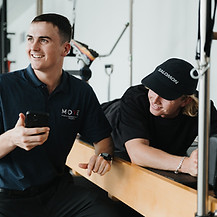What is Dry Needling?
Dry Needling is a form of trigger point therapy using fine needles to stimulate myofascial release, reduce pain, muscle tension, and inflammatory responses.
All of our physiotherapist are qualified to use dry needling, and may recommend it as part of your treatment plan or at your request.
Dry Needling in practice & FAQ
Your physio may recommend dry needling as a more efficient method to release tension and target trigger points. One of the main benefits of dry needling is being able to stimulate the muscle deeper than manual therapy will allow.
What does dry needling do?
It aims to reduce the tone of trigger points, which are localised hyper-irritable band of muscle.
Who benefits from Dry Needling?
-
People with active trigger points or myfascial pain
-
People with acute / sub-acute muscle injury
-
If dry Needling has worked for you in the past
What happens to the muscle during Dry Needling?
The aim of Dry Needling is to change muscle tension and reduce pain by reducing excitability of the central nervous system. At a muscle level we aim to create a local twitch response, which increases blood flow and oxygenation at the tissue level.
Is Dry Needling painful?
Sometimes, but only for a short time. The goal is to illicit a pain modulating response (pain changing), to improve function and range of motion.
How long do the benefits last?
To ensure optimal results, it's imperative Dry Needling is applied in-conjunction with other therapies. At Move we offer a holistic approach to our care which may include:
-
Education
-
Exercise therapy
-
Load management
Dry Needling vs Acupuncture
Dry Needling is not Acupuncture. Dry Needling focus on areas of tightness to illicit local tissue change. While Acupuncture aims to work on the constructs of Oriental Medicine, affecting meridians and the status of Qi.


.png)

